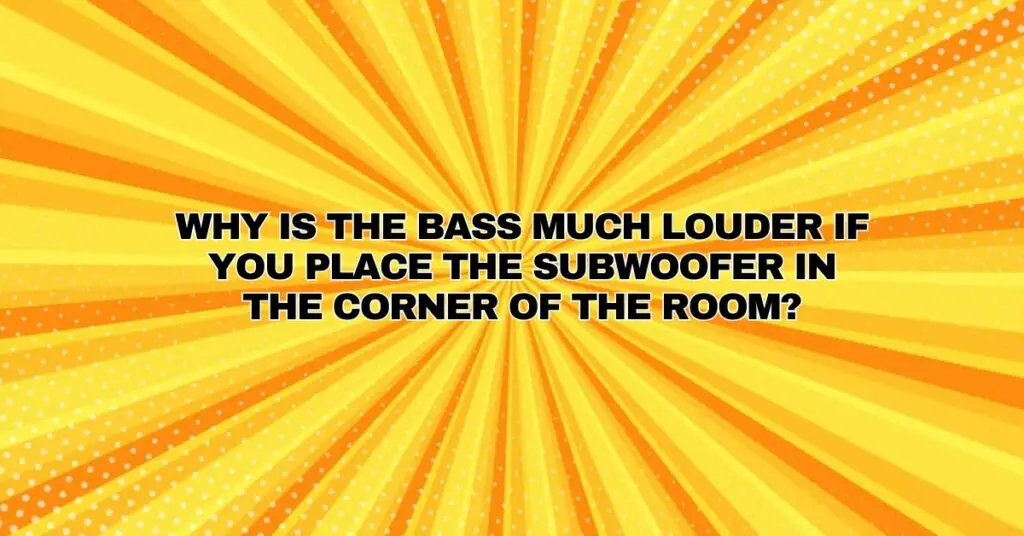Anyone who’s experienced the power of a well-placed subwoofer knows that it can transform the audio landscape of a room, delivering deep and thunderous bass that you can feel in your bones. Interestingly, many enthusiasts have discovered that placing a subwoofer in the corner of a room seems to make the bass even more prominent and resonant. In this article, we’ll delve into the acoustic science behind this phenomenon and explain why bass is often much louder when the subwoofer is positioned in the corner.
The Role of Room Acoustics
To understand why placing a subwoofer in the corner of a room enhances bass output, we need to consider the fundamental principles of room acoustics. Sound behaves differently in an enclosed space, such as a room, due to the reflection, absorption, and interference of sound waves.
1. Room Modes:
Rooms have certain resonant frequencies, known as room modes, at which sound waves can become trapped and reinforce one another. These modes are influenced by the room’s dimensions, shape, and boundaries. In essence, they create areas in the room where certain frequencies are emphasized.
2. Pressure Buildup:
When a subwoofer generates low-frequency sound waves, these waves can become concentrated in specific areas of the room, particularly in corners. This concentration of energy leads to pressure buildup, resulting in increased bass output in those regions.
3. Boundary Reinforcement:
The walls and surfaces of a room act as boundaries that can either reinforce or absorb sound. Placing a subwoofer in a corner means that it is close to multiple boundaries (two walls and the floor or ceiling), which can enhance bass reinforcement due to sound wave reflections.
The Corner Effect
When you position a subwoofer in a corner of the room, several factors come into play that contribute to the perceived increase in bass volume:
1. Pressure Amplification:
In corners, sound waves generated by the subwoofer encounter multiple surfaces close to one another. As a result, the pressure of the sound waves increases, leading to a more significant perception of loudness. This is sometimes referred to as “corner loading.”
2. Room Modes Emphasis:
The proximity to room boundaries and corners means that the subwoofer can excite specific room modes more effectively. These room modes reinforce the bass frequencies, making them more prominent and resonant. This phenomenon is especially pronounced at the natural resonant frequencies of the room.
3. Reinforced Boundaries:
The corner placement enhances the effect of boundary reinforcement. The sound waves bounce off the adjacent walls, floor, and ceiling, creating a reinforcing effect that amplifies the bass frequencies.
Practical Considerations
While placing a subwoofer in the corner can yield impressive bass performance, it’s essential to consider practical aspects and room aesthetics:
1. Overemphasis of Bass: The corner placement can lead to an overemphasis of bass frequencies, which may not be ideal for all listening preferences or room sizes. Adjustments to the subwoofer’s settings may be necessary to achieve a balanced sound.
2. Room Layout: Room layout, furniture, and décor may limit your ability to place the subwoofer in a corner. In such cases, experimentation with different placements is recommended to find the best compromise between bass performance and room aesthetics.
Conclusion
Placing a subwoofer in the corner of a room can indeed result in much louder and more resonant bass due to the interaction of sound waves with room boundaries, pressure buildup, and the reinforcement of room modes. However, the effectiveness of this placement depends on room size, layout, and personal listening preferences. As with any audio setup, it’s essential to experiment with subwoofer placement to find the sweet spot that delivers the ideal balance of deep, powerful bass and overall sound quality for your listening environment.

